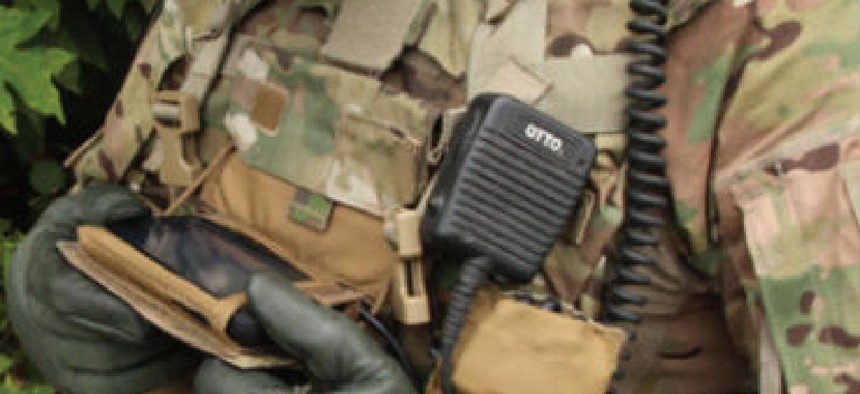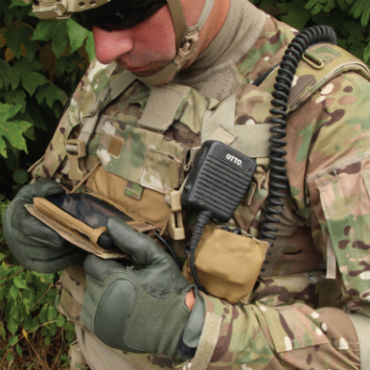Barcodes and scanners: It’s the Army, not the supermarket

The goal is relieving busy data collectors in the field from labor-intensive tasks, saving time and reducing errors, says Col. Jack Wayman.

The army wants to dispense with bulky scanners and replace them with mobile devices soldiers already use.
As director of integration improvement initiatives in the deputy chief of staff’s office, Army Col. Jack Wayman has been paying a lot of attention to how improving scanning applications on mobile devices can simplify the daily routine of soldiers in the field.
Mobile applications for data collection can reduce error rates and costs, and improve processes for tasks involving products, inventory and paperwork that are common for many soldiers, Wayman said in a panel discussion at the Federal Mobile Computing Summit in Washington, D.C., on Aug. 20.
The goal is to move away from using traditional, bulky scanners with hefty price tags — usually about $2,000 — and replace them with mobile devices soldiers already use, Wayman said.
A Defense Department initiative is establishing a data standard for unique identification (UID) of tangible personal property. Instead of a locally unique identifier with a series of numbers and combinations, the new system would have the identifier encoded in a bar code and registered to DOD, according to Wayman.
Wayman predicted that when the program will save $3-5 billion a year when fully implemented.
Using barcodes and scanners to do inventory and track equipment could also greatly reduce error rates. The paper-based system that requires carrying a special form and writing down the serial number and other data is prone to mistakes, Wayman told FCW in an interview after the panel.
"These are line workers. They have competing priorities -- they're tired, they're hungry, people are shooting at them, whatever the case may be -- we have to find ways of unburdening data collectors from these labor intensive tasks," Wayman said.
Wayman gives the example of one Army outfit using scanners with wireless connectivity that was able to cut down the process for doing quality control paperwork on a particular process from four hours to five minutes, with all the information collected and transmitted.
"Four hours to five minutes is unimaginable," Wayman said. "And yet this is what can be done if you can integrate all the capabilities you need to collect and transmit information." But, he pointed out, the Army won’t be able to get to that stage until it figures out how to mark everything with a quality barcode.
Another indirect benefit would be in recruiting efforts for young people in the Army who have grown up with technology -- young soldiers would be shocked to come in to the Army and be handed a stack of paper and a pen, he said.
Moving away from a paper intensive process is important "if we're going to be able to compete for people to join the Army and help bring the Army into the 21st century," Wayman said.
Although across the Defense Department, improving processes with mobile devices is largely still a work in progress, Wayman said.
"There are pockets of excellence where people really have the vision, but the vast majority of people in management positions are not familiar with it so they don’t really see it," said Wayman, a 30-year man who will be retiring at the end of 2014. "They see it is possible, but they don’t want to get going too fast in the wrong direction and spend too much money trying to do something just because it’s cool. You really have to do the math."
NEXT STORY: National labs go big on climate modeling


